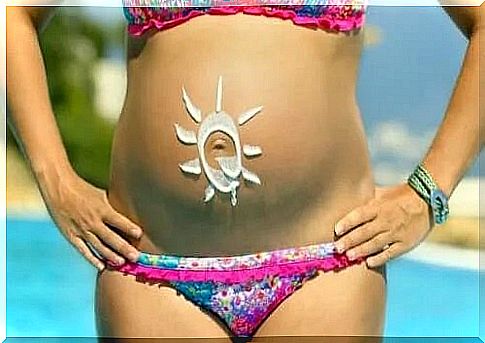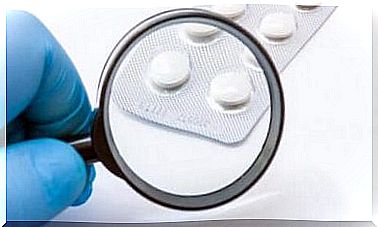Tan In Pregnancy: Is It Safe?

The sun and health go hand in hand, so it may seem a little strange to wonder if it is risky to tan during pregnancy. Well, the short answer is that it can be dangerous if the pregnant tan becomes an excessive activity, which you do without understanding the scope and limits.
Ultraviolet rays with short waves (UVB) and ultraviolet rays with long waves (UVA) have effects on the skin depending on their intensity and length. In this sense, we know that the skin produces vitamin D3 under the action of UVB rays. This is essential for bone structure. It only takes 20-30 minutes of sun exposure to get these benefits.
Tanning requires more time and care. And if doing so under the sun involves risks and requires maximum caution, then going to the solarium is completely excluded.
In this article, we will explain the reasons why pregnant tan can be dangerous.
Why are we tanning?
Tanning is a reaction of the skin to protect itself from the action of ultraviolet rays with short waves (UVB rays). The ozone layer intercepts this radiation, but the climate crisis has affected it and the incidence of these rays on the earth’s surface has increased. The skin captures them and its natural response is the production of melanin. This is a biopolymer produced by melanocytes, which are present in the deepest layer of the epidermis (or basal layer).
Melanin, which absorbs up to 99% of the sun’s rays, is deposited in keratinocytes, the cells that make up the skin. It accumulates around the cell nucleus to protect DNA from possible mutations due to the effects of solar radiation. Extending the time of sun exposure means overcoming this natural barrier and moving from an attractive tan to a burn.
Tanning in pregnancy: is it safe?

In general, tanning is not recommended during pregnancy. The enthusiasm of summer, the feeling of freedom and the idea that the sun will not hurt us can have serious repercussions. However, taking all precautions and being aware of the risks, a little sun will do the baby good.
The sun helps to synthesize vitamin D, which contributes to the absorption of calcium, thus helping to strengthen the bones of the mother and baby, who receives calcium through the placenta. The need for vitamin D increases by up to 300% due to the mineralization of the fetal bones.
Sun exposure for up to half an hour does not necessarily involve tanning. Staying in the sun in the morning, before 11 o’clock or in the afternoon, after 5 o’clock, is healthy. But tanning, despite its aesthetic appearance, is a response to solar radiation, and its intensity will depend more on the type of skin than the sun in the sky.
If your skin is very white before tanning, it will burn; therefore, to protect yourself, use a product with a protection factor between 20 and 50. If your skin is light in color, it will gradually tan, and the protection factor should be between 15 and 20.
Darker skin tans quickly. Very dark skin is intensely tanned. In these cases, sunscreen products should be between 10 and 15 and between 4 and 10, respectively. In short, without adequate protection, we should not be exposed to ultraviolet rays.
Tanning in pregnancy: possible consequences
Exposure to the sun without being careful and with an obsessive desire to tan can be an indication of tanorexia. This obsession can cause pregnant women to go to the solarium, where radiation is much stronger and more dangerous than solar radiation.
We have already seen that the sun is, from any point of view, healthy at the right times. But if we want to have a beautiful tan, sun exposure is not the only solution.
There are special creams whose active ingredients combine with keratin and other proteins in the surface layers of the skin. Therefore, they produce a melanin-free tan that suits your aesthetic desire.

Tips to protect yourself from radiation during pregnancy
Under care schemes, such as the use of sunscreen and compliance with the recommended hours, the first day in the sun should not exceed 15 minutes. The next day, you can stay in the sun for an extra 10 minutes. And so on, up to 10 days if necessary; this process works as a mechanism for preparing the skin to withstand the sun.
With this tanning method, you will be protected immediately, but not from long-term effects, such as skin cancer or premature aging. Skin tanning cannot be a recurring practice.
Umbrellas or standing in the shade on the beach do not help, because sand and water act as mirrors that reflect radiation. The risk is to be exposed while we think we are protected. The burns will appear later.
Yes, tanning in pregnancy is risky
If you can’t avoid the sun after 11 in the morning and you find it impossible not to lie in the sun or under an umbrella, then yes, it is risky to tan during pregnancy. In this case, sunscreen is of vital importance. All exposed areas of the body must be thoroughly protected.
Apply a protective lotion 30 to 60 minutes before exposure, in sufficient quantity. After entering the water or sweating, sunscreen should be reapplied.
It does not matter if the packaging says that the product is water resistant. If more than three hours of sun exposure have elapsed, apply again. No precaution is taken when it comes to protecting the skin and especially the healthy development of the baby.









